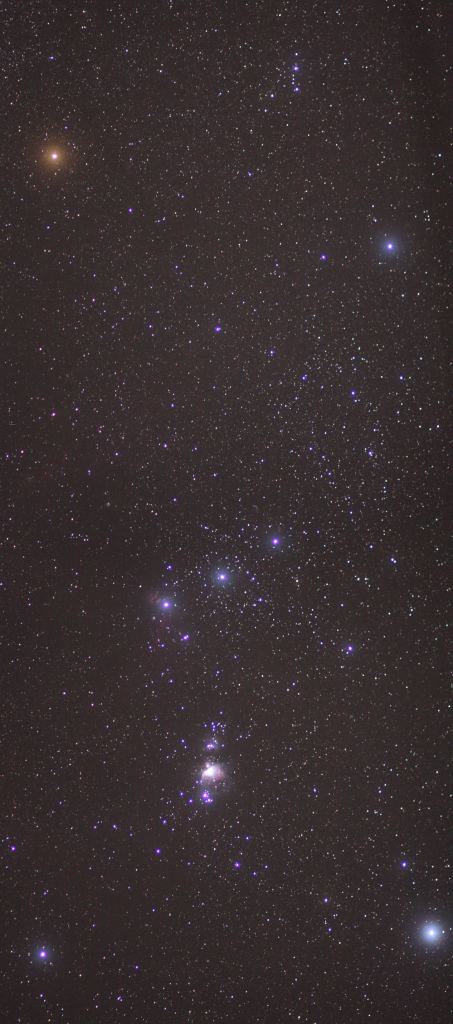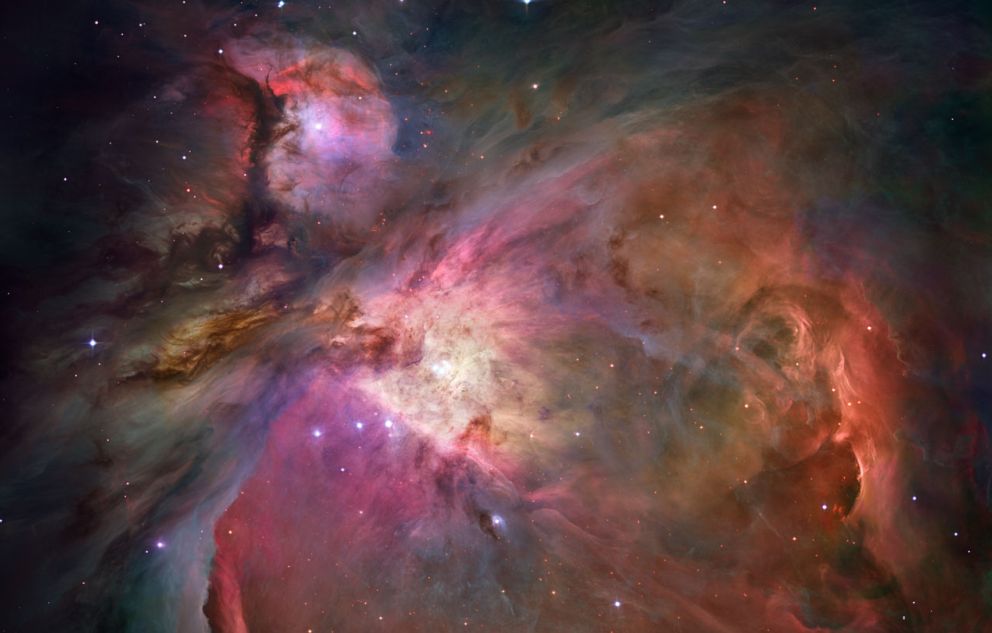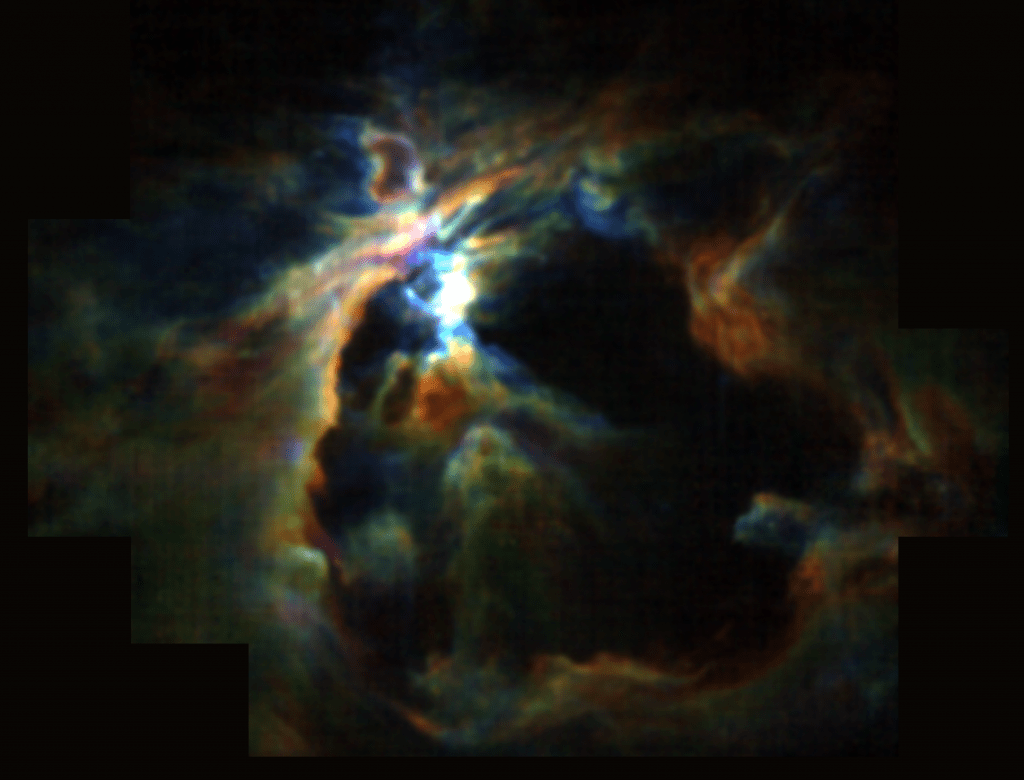The Orion Nebula is one of the most observed and photographed objects in the night sky. At a distance of 1350 light years away, it's the closest active star-forming region to Earth.
This diffuse nebula is also known as M42, and has been studied intensely by astronomers for many years. From it, astronomers have learned a lot about star formation, planetary system formation, and other bedrock topics in astronomy and astrophysics. Now a new discovery has been made which goes against the grain of established theory: stellar winds from newly-formed massive stars may prevent other stars from forming in their vicinity. They also play a much larger role in star formation, and in galaxy evolution, than previously thought.
The Orion Nebula is pretty easy to see. If you can see the Orion constellation, then you're looking at the nebula without really trying. Depending on where you live, you can use binoculars or a small telescope to see it. Through a telescope, it looks like a grey, wispy, cloud.
But more powerful instruments reveal all the complexity inside the nebula. It's a great example of a stellar nursery, a place where young stars are born in a cloud of gas called a molecular cloud. Around these young stars are young protoplanetary disks, places where planets like ours may be forming right now.
As these young stars are born, and burst into fusion, they expel a stellar wind. This new study shows that this stellar wind plays a larger role than previously thought.
The study is published in the journal Nature, and is led by Cornelia Pabst, a Ph.D. student at the University of Leiden in the Netherlands and the lead author on the paper. In the paper, the authors describe how newly-formed stars inhibit the formation of other stars in a process called "stellar feedback."
Current thinking says that supernovae can dominate the star-forming process. Massive supernova explosions send powerful shock waves through molecular clouds, and this creates dense concentrations of gas which then go on to form stars. While that remains true, it looks like stellar feedback from new stars may shape the process, too.
The research is based on the work of NASA's Stratospheric Observatory for Infrared Astronomy (SOFIA.) SOFIA is a flying observatory in a customized Boeing 747. SOFIA has a German instrument onboard called GREAT, or German Receiver for Astronomy at Terahertz Frequencies.
The Orion Nebula is an object of great astronomical beauty, but that beauty is what makes it hard to see into. Those clouds of gas that look so ephemeral and beautiful do weird things to light. GREAT allowed astronomers to look inside the Orion Nebula with increased clarity and to observe in detail the newly-formed star Theta1 Orionis C (01 Ori C).
What they found is that the stellar wind from 01 Ori C is carving a bubble around itself, essentially blowing all the gas away from itself, preventing any new stars from forming.
"Astronomers use GREAT like a police officer uses a radar gun."
"The wind is responsible for blowing an enormous bubble around the central stars," explained Pabst. "It disrupts the natal cloud and prevents the birth of new stars."
Because SOFIA does its science from altitude, it flies above 99% of the water vapour in Earth's atmosphere. That, combined with the sensitivity of the GREAT instrument, makes it a powerful fool for peering at 01 Ori C. The team behind the paper combined GREAT data with data from the Herschel and Spitzer space observatories to get their results.
They were able to determine the velocity of the gas creating the bubble and to track its growth and origin. "Astronomers use GREAT like a police officer uses a radar gun," explained Alexander Tielens, an astronomer at Leiden Observatory and a senior scientist on the paper. "The radar bounces off your car, and the signal tells the officer if you're speeding."
The process is called "stellar feedback" because of the way the bubble interacts with the gas around it. As the image above shows, the wind (black arrows) leaves the star in all directions. But when it hits the dense OMC-1 region, on the right of the image, there is pushback from other young stars, labelled BN/KL in the graphic. This creates the vertical column of red-grey arrows, which represents the combined bubbles from 01 Ori C's and the BN/KL bubbles.
As these stellar winds feed back on each other, they shape the interstellar medium (ISM) and any molecular clouds in the vicinity. This creates localized areas that either encourage or discourage more star formation.
"Stellar winds from O-type massive stars are very effective at disrupting molecular cores and star formation."
The bubble itself is huge. It's a 4 parsec diameter half shell. Inside that area, no star formation is possible because all the gas has been forced out. But on the edge of that bubble, gas is more dense. In those denser regions, star formation is more likely. It's similar to the way that shockwaves from a supernova create areas of dense gas, which leads to increased star formation.
01 Orionis C's bubble is inside a much larger bubble called the Orion-Eridanus Superbubble, made of overlapping supernova remnants. Eventually, the small bubble will erupt and vent its gas into the superbubble. In some millions of years, another supernova will explode and carry the material from 01 Orionis C's bubble into the wall of the superbubble. That wall of gas that makes up the edges of the superbubble will be come more dense, and likely lead to more star formation. So while it may look like the supernova played a more direct role in star formation, the bubble from the young star will already have played its role.
As the conclusion of the paper says, "Stellar winds from O-type massive stars are very effective at disrupting molecular cores and star formation. Because energy input from stellar wind is dominated by the most massive stars in a cluster whereas that from supernovae is dominated by the more numerous B-type stars, the predominance of the disruption caused by stellar winds has a direct effect on cosmological simulations."
This is only one example of the stellar feedback process. As the paper says, "Here we have analysed one specific case of the interaction of a wind from a massive star with its environment; whether our conclusions apply more generally still needs to be assessed."
Sources:
- NASA Press Release: Lifting the Veil on Star Formation in the Orion Nebula
- Research Paper: Disruption of the Orion molecular core 1 by wind from the massive star ? 1 Orionis C
- SOFIA
 Universe Today
Universe Today





